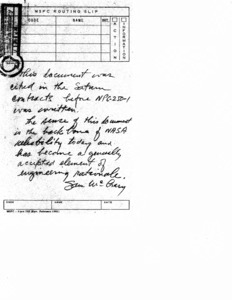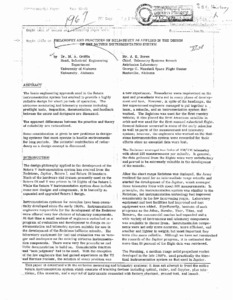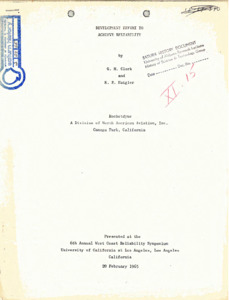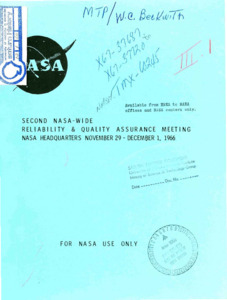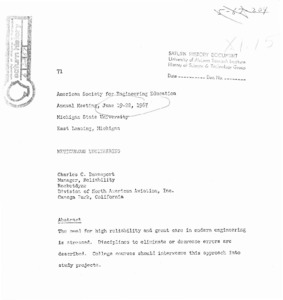
Browse Items (5 total)
Sort by:
-
"Reliability engineering program provisions for Space System contractors. Revision 2."
This document was cited in the Saturn contracts before NPC-250-1 was written. The sense of this document is the backbone of NASA reliability today and has become a generally accepted element of engineering rationale. -
"Philosophy and practices of reliability as applied in the design of the Saturn Instrumentation System."
The basic engineering approach used in the Saturn instrumentation system has evolved to provide a highly reliable design for short periods of operation. The airborne measuring and telemetry systems including preflight tests, inspection, documentation, and feedback between the users and designers are discussed. The apparent differences between the practice and theory of reliability are rationalized. Some consideration is given to new problems in designing systems that must operate in hostile environments for long periods. The potential contribution of redundancy as a design concept is discussed.; This paper is concerned with the airborne measuring and telemetry systems; it does not attempt to treat the entire Saturn instrumentation system which consists of tracking devices including optical, radar, and Doppler, plus television, film cameras, and a myriad of instruments connected with factory checkout, ground test, and launch. -
"Development Effort to Achieve Reliability."
Presented at the 6th West Coast Reliability Symposium, University of California at Los Angeles, Los Angeles, California, 20 February 1965.The development of a large liquid rocket engine can represent the expenditure of several hundred million dollars of effort. Before 30 percent of the contracted development funds have been expended, however, the engine will probably have operated for the mission duration. The capability to operate at least one successful test early in a development program is evidence of achieving a minimal reliability level, but the major objective of the development program is producing a design which performs reliably. A rocket engine reliability prediction must view reliability as a dynamic concept, constantly being altered by development effort. -
"Proceedings : second NASA-wide reliability & quality assurance meeting : NASA Headquarters, November 29 - December 1, 1966."
The papers presented at the second NASA-Wide Reliability and Quality Assurance Meeting are published to disseminate current experiences and information. These papers, presented at NASA Headquarters on November 29 - December 1, 1966, are one means of exchanging current NASA reliability and quality assurance knowledge between projects and programs. This publication has been marked "FOR NASA USE" since it contains management opinions and contract experiences. Publication of papers suitable for wide dissemination in the Government, industry and University community is expected to be made separately. John E. Condon, Director, Reliability & Quality Assurance. -
"Meticulous engineering."
The need for high reliability and great care in modern engineering is stressed. Disciplines to eliminate or decrease errors are described. College courses should interweave this approach into study projects.
